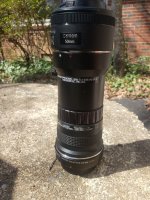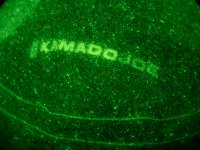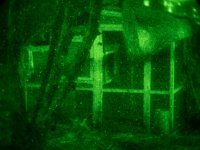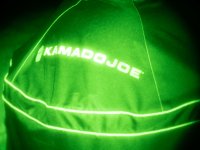First off, many thanks to everyone who posts Night Vision info and write ups. I've learned more about NV here than anywhere else. I figured it is time to give back by sharing info about this amazing NV device I took a chance on. This should be a treat for anyone who has tried recording through a pvs-14.
The Astroscope 9350 is a modular device that adapts gen 3 night vision to any number of system cameras. It can also be turned into a pocketscope. The main thing that attracted me to it, however, is the availability of back body adapters for common full frame system cameras that should give a sharp image with little to no vignetting. As far as I can tell, it's the only game in town that can adapt real gen 3 night vision to Canon EF and Nikon F mount and retain all the features. This does come with some caveats which I will get into later.
The system for Canon EF lenses (what I have) has 3 main parts. A front lens adapter, back body adapter, and central intensifier unit. The central intensifier unit is a clamshell that holds a 10160 tube and passes power from the camera to the tube. This means that no external power is needed for the tube, it draws the same power as the lens normally would and passes power to the lens as well. There are variable gain and auto gain front lens adapters to work with variable or autogain tubes. The caveat here is that it means manual EF lenses without power contacts (for example, the Rokinon 24mm that everyone loves) will not work. Also, for whatever reason, the back body adapter projects an APS-C sized image circle. Astroscope does sell a full frame adapter that fixes this issue for full frame users. However, this system does (IMO, miraculously) work with speedboosters and adapters for other camera systems. I've been using this system solely on a micro four thirds Panasonic GH5 with a Viltrox speedbooster, and it's been working pretty well. It does fill the frame in 1080p with zero vignetting unless I do something that makes IBIS kick in hard. It also is a bit heavy, I weighed it in at over 1 lb 15 oz with a Canon 50mm F1.8 (a very light lens), which is something to keep in mind. I'll post some unedited test shots soon and a test video and let you guys judge the performance. In the meantime here is a pic of the absolute unit.
The Astroscope 9350 is a modular device that adapts gen 3 night vision to any number of system cameras. It can also be turned into a pocketscope. The main thing that attracted me to it, however, is the availability of back body adapters for common full frame system cameras that should give a sharp image with little to no vignetting. As far as I can tell, it's the only game in town that can adapt real gen 3 night vision to Canon EF and Nikon F mount and retain all the features. This does come with some caveats which I will get into later.
The system for Canon EF lenses (what I have) has 3 main parts. A front lens adapter, back body adapter, and central intensifier unit. The central intensifier unit is a clamshell that holds a 10160 tube and passes power from the camera to the tube. This means that no external power is needed for the tube, it draws the same power as the lens normally would and passes power to the lens as well. There are variable gain and auto gain front lens adapters to work with variable or autogain tubes. The caveat here is that it means manual EF lenses without power contacts (for example, the Rokinon 24mm that everyone loves) will not work. Also, for whatever reason, the back body adapter projects an APS-C sized image circle. Astroscope does sell a full frame adapter that fixes this issue for full frame users. However, this system does (IMO, miraculously) work with speedboosters and adapters for other camera systems. I've been using this system solely on a micro four thirds Panasonic GH5 with a Viltrox speedbooster, and it's been working pretty well. It does fill the frame in 1080p with zero vignetting unless I do something that makes IBIS kick in hard. It also is a bit heavy, I weighed it in at over 1 lb 15 oz with a Canon 50mm F1.8 (a very light lens), which is something to keep in mind. I'll post some unedited test shots soon and a test video and let you guys judge the performance. In the meantime here is a pic of the absolute unit.





